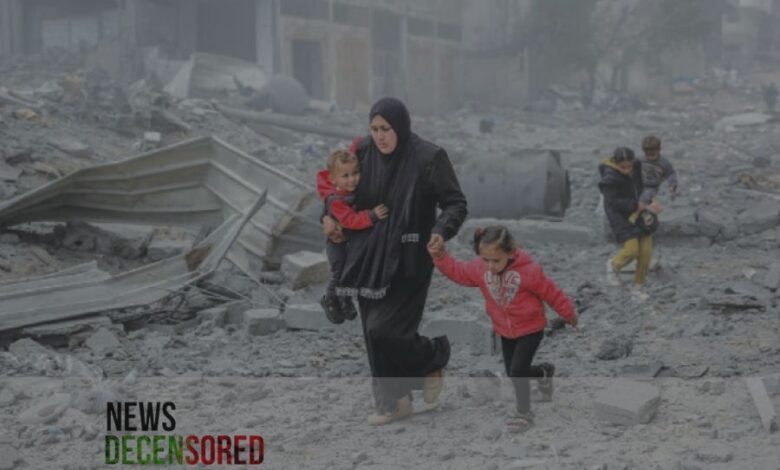An unprecedented economic crisis in the Gaza.

Six months have passed since the start of the war in Gaza, a war whose economic cost was – and still is – massively high, and which has caused almost complete devastation on the Strip, which is suffering under the weight of endless suffering.
The war had widespread economic impacts on the Palestinian economy, depriving it of its main components and destroying its foundation, especially with regard to infrastructure.
According to estimates by the United Nations Conference on Trade and Development:
It will take seven decades for the Gaza Strip to return to the level of GDP it recorded in 2022, even if the reconstruction process begins immediately and Gaza returns to the average growth rate of 0.4 percent it has seen in the past 15 years.
The level of destruction caused by the latest Israeli military operation has made the Gaza Strip unlivable.
50 percent of the buildings in Gaza are damaged or destroyed. The longer these (military) operations in Gaza last, the more serious their impact will be.
The United Nations Conference on Trade and Development estimated that by the end of February, more than 50,379 buildings, equivalent to 18 percent of the total buildings in the Gaza Strip, had been destroyed or damaged.
The impact of the war on the Palestinian economy
The war affected all Palestinian sectors:
This was not limited to civilians and residential buildings; Rather, it expanded to destroy everything related to the necessities of life for the Palestinian people.
Heavy financial losses estimated at hundreds of millions of dollars will occur, especially since there are commercial places that have been completely removed from the map.
Targeting all areas and agricultural lands, by bombing them and trying to poison them, with internationally prohibited weapons such as phosphorous missiles.
Destroying all livestock in the Gaza Strip, in addition to fish wealth, which was an essential source for the Palestinian people, and targeting fishermen’s boats.
The industrial sector was destroyed, as factories, facilities and institutions were blown up, and trade movement such as import and export stopped.
According to data from the United Nations:
Gaza’s economy contracted by 4.5 percent in the first three quarters of 2023.
The war “significantly accelerated the decline and precipitated a 24 percent contraction in GDP and a 26.1 percent decline in GDP per capita over the entire year.”
While 45 percent of the workforce in Gaza was suffering from unemployment before October 7, the percentage in the besieged Strip rose to approximately 80 percent by December.
Major economic impacts on neighboring countries.
Regarding the economic impacts on neighboring countries, the expert in Palestinian affairs, Ashraf Abu Al-Hol, said in a statements to Arab media, that the continuation of the war on Gaza, its extension for many months, and the regional expansion with the participation of other parties such as the Houthis, led to major economic impacts on The Arab region, first and foremost, has had a direct impact on a significant decline in foreign investment and tourism, because it has become a region of tension and instability.
Abulhoul says that Egypt was twice as damaged as any other country in the region. Especially after the Houthis targeted ships in the Red Sea, in addition to the missiles they fired towards Eilat, and this matter led to a decline in navigation traffic in the Suez Canal, in addition to a decline in internal investment and supply chains for raw materials and manufactured goods, in addition to the rise in foreign currency prices, against the backdrop of the sharp rise in the price of the dollar in Egypt.
The impact also affected Lebanon and some other countries that were forced to pay higher costs for oil than previous periods, in addition to a decline in investments that led to huge losses in the region’s economies, led by Egypt.
In this context, reference is made to the statements of the International Monetary Fund, in which it stressed that the war in Gaza was a new “shock” to the economies of the Middle East and North Africa region, explaining that the consequences of the escalation in Gaza caused “enormous human suffering” and increased pressures in the region. Full of challenges, especially in the economies of countries neighboring the conflict and beyond.
The International Monetary Fund reduced the expected growth rate in the Middle East and North Africa region during the current year by half a percentage point to 2.9 percent, after a modest growth rate recorded by the region’s economy last year, amounting to 2 percent.




